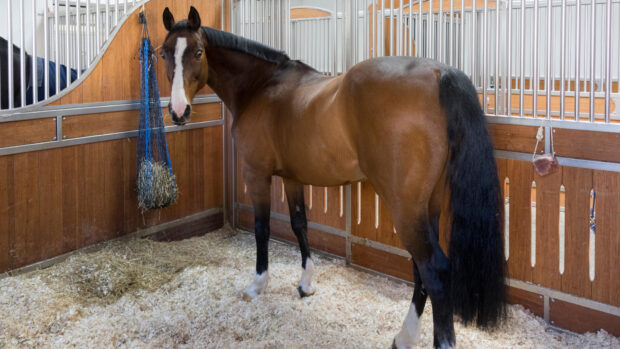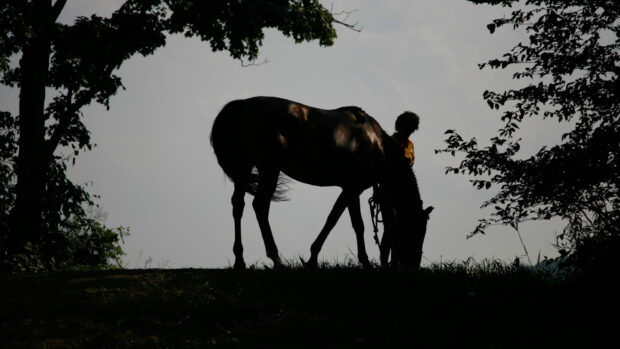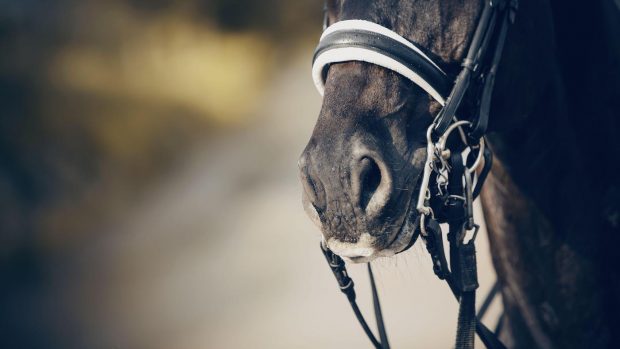Tackling equine obesity is about more than just increasing owners’ knowledge – and everyone has a role to play, researchers have found.
A study published in Frontiers in Veterinary Science looked at human behaviour factors surrounding equine obesity. Researchers collected data from interviews with owners and industry professionals, and discussion forums, and analysed this using the COM-B model of behaviour change – which refers to capability, opportunity, motivation and behaviour.
Among the findings, the study showed that most owners had an understanding that excess body fat was a health risk to their horses, but because owners found it hard to identity how much fat was on their animals, most had not made changes to their horses’ management to reduce weight until an acute health issue such as laminitis occurred. Owners in the study understood that a range of management strategies were available, but they found it hard to identify what would work within the environment in which they kept their horse.
Lead author Tamzin Furtado, of the University of Liverpool, told H&H the model highlighted the different aspects, including physical challenges or social influences, making it difficult for owners to recognise that their horses were overweight, or to manage their weight.
“The take-home message is that there’s no one factor that’s key to changing the levels of equine obesity. We need to think more broadly than just increasing owners’ knowledge, because we’re impacted by the social norms around us and the physical environment and so on,” she said.
“We all have our roles to play, whether you’re on a livery yard or on social media, we can all support each other and help people realise that weight management is a responsible thing to do.”
Ms Furtado added that there have been “good indications” that awareness of obesity is increasing, but said the number of obese horses is not necessarily decreasing.
“The fact that we have increased awareness is a good first step, but there’s lots of other things we can be doing such as supporting yard managers to create environments where horses can be turned out without too much grass, but with an interesting environment,” she said.
“Other things that work quite well are having ‘fit clubs’, and there’s good science that shows having an accountability buddy or teaming up with a friend to support each other can be really beneficial. Another thing people can do is share knowledge from reputable sources, to make sure we get the real information out there to people. It’s all about collaboration and building on the positive stuff that we already have.”
World Horse Welfare head of UK support Sam Chubbock told H&H that managing the weight of good doers is a “perpetual challenge” and one faced by a significant number of owners.
“Traditional ways of approaching equine weight management can have limited success, but this study offers a multifaceted and novel route into an issue that it is important to recognise as being as much of a health issue as horses that are underweight,” she said.
“Changing perceptions and actions around weight can in itself be challenging, but this study provides options and a different approach to try, which is an important addition to help owners with this ongoing and often very difficult management issue.”
British Equine Veterinary Association president David Rendle said behavioural studies are important in understanding health-related behaviours and identifying potential barriers to change.
“Failure to utilise behavioural science not only compromises the potential benefits of interventions but can result in overtly negative impacts on health,” he said.
“Models suggest that in order to change behaviour, we first need to understand that behaviour and endeavour to understand the attitudes and values which contribute to the behaviour being performed, as well as the social and environmental factors which make the behaviour easier or more difficult to carry out.”
You might also be interested in:

‘This issue is not going away’: new measures in the fight against equine obesity

‘Judges must place fat horses lower’ to help beat equine obesity

Subscribe to Horse & Hound magazine today – and enjoy unlimited website access all year round
Horse & Hound magazine, out every Thursday, is packed with all the latest news and reports, as well as interviews, specials, nostalgia, vet and training advice. Find how you can enjoy the magazine delivered to your door every week, plus options to upgrade your subscription to access our online service that brings you breaking news and reports as well as other benefits.




